
The PlayStation is a home video game console developed and marketed by Sony Computer Entertainment. It was released in Japan on 3 December 1994, in North America on 9 September 1995, in Europe on 29 September 1995, and in Australia on 15 November 1995. As a fifth-generation console, the PlayStation primarily competed with the Nintendo 64 and the Sega Saturn.

The Sega Saturn is a home video game console developed by Sega and released on November 22, 1994, in Japan, May 11, 1995, in North America, and July 8, 1995, in Europe. Part of the fifth generation of video game consoles, it is the successor to the successful Genesis. The Saturn has a dual-CPU architecture and eight processors. Its games are in CD-ROM format, including several ports of arcade games and original games.

A platformer is a sub-genre of action video games in which the core objective is to move the player character between points in an environment. Platform games are characterized by levels with uneven terrain and suspended platforms of varying height that require jumping and climbing to traverse. Other acrobatic maneuvers may factor into the gameplay, such as swinging from vines or grappling hooks, jumping off walls, gliding through the air, or bouncing from springboards or trampolines.
Wipeout is a series of futuristic anti-gravity racing video games developed by Studio Liverpool.

Einhänder is a scrolling shooter developed by Square for the PlayStation console. It was released in Japan on November 20, 1997 and in North America on May 5, 1998. It was also re-released for the Japanese PlayStation Network on June 25, 2008. The name Einhänder is German and denotes a type of sword that is wielded with one hand, here used to refer to the single manipulator arm possessed by the player's spacecraft.

Tomba! 2: The Evil Swine Return, or simply Tomba! 2, is a platform-adventure game developed by Whoopee Camp and published by Sony Computer Entertainment for the PlayStation. The game was released in Japan in 1999 and in other territories the following year. The game is a sequel to Tomba! and centers on the exploits of the eponymous feral child as he attempts to rescue his friend Tabby from an evil race of anthropomorphic pigs.

Jumping Flash! 2, known in Japan as Jumping Flash! 2: Big Trouble in Little Muu, is a platform video game developed by Exact and MuuMuu and published by Sony Computer Entertainment for the PlayStation in 1996. It is the direct sequel to Jumping Flash!, which was released the previous year. It was later re-released for the PlayStation 3 and PlayStation Portable via the PlayStation Network in 2009.

Bubsy 3D is a platformer game developed by Eidetic and published by Accolade. It is the first 3D game in the Bubsy series, and the fourth game in the series overall. The game was released for the PlayStation on November 25, 1996, in North America, with a later European release in August 1997. Bubsy 3D follows the series' titular character, an orange bobcat named Bubsy, who travels to the planet Rayon to stop the alien Woolies, and return safely to Earth.

Ridge Racer is a 1993 racing video game developed and published by Namco. It was released initially on the Namco System 22 arcade system board and ported to the PlayStation console in 1994. It is the first title in the Ridge Racer series released for arcades and home consoles.
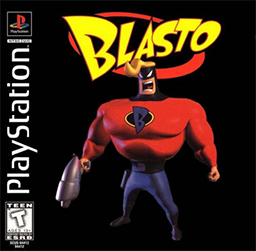
Blasto is a third-person shooter platform game developed by Sony Interactive Studios America and published by Sony Computer Entertainment for the PlayStation in 1998. Phil Hartman voiced Captain Blasto, an extremely muscular, alien-fighting, dimwitted captain.
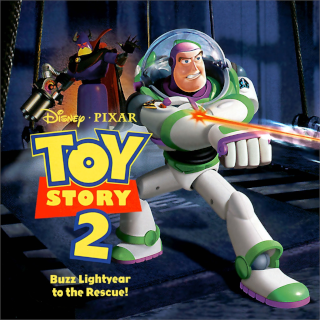
Toy Story 2: Buzz Lightyear to the Rescue! is a platform game developed by Traveller's Tales and published by Activision and Disney Interactive. Based on Disney/Pixar's 1999 computer animated film Toy Story 2, It was released for the Nintendo 64, PlayStation, Microsoft Windows, and Macintosh in late 1999, while a Dreamcast version followed in 2000. The computer versions were released under the title Disney/Pixar's Action Game, Toy Story 2. A different version, a side-scrolling platform game titled Toy Story 2, was also released for the Game Boy Color in 1999.

Gex: Enter the Gecko is a platform game and the second installment of the Gex video game series, released in 1998 and 1999 for the PlayStation, Nintendo 64, Microsoft Windows, and Game Boy Color. Its protagonist, Gex, a TV-binging, wisecracking gecko, is voiced by Dana Gould in the North American version, Leslie Phillips in the European release, and Mitsuo Senda in the Japanese release. Gex seeks to collect three types of remotes to unlock different TVs in the overworld that aid in the fight against his arch-nemesis, Rez.

God of War: Betrayal is an action-adventure mobile game developed by Javaground and Sony Online Entertainment's (SOE) Los Angeles division, and published by Sony Pictures Digital. Released for mobile phones supporting the Java Platform, Micro Edition on June 20, 2007, it is the third installment in the God of War series, and the fifth chronologically. Loosely based on Greek mythology, Betrayal is set in ancient Greece with vengeance as its central motif. The player controls the protagonist Kratos, who became the new God of War after killing the former, Ares. Kratos is framed for the murder of Argos and pursues the true assassin across Greece, resulting in a confrontation with Olympian messenger Ceryx.
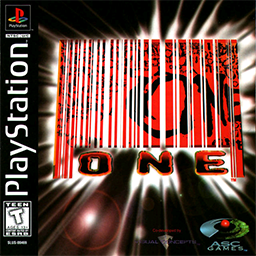
One is a video game released for the Sony PlayStation in 1997. The player controls John Cain, a man who awakes with no memory and one of his arms replaced by a gun, through a series of three-dimensional action stages. One was met with divisive reviews from critics, with some lauding its visuals, level designs, and cinematic feel, while others argued that frustrations with the gameplay ruin what had been a promising game. The game was released as a PSone Classic for download on the PlayStation Network on March 18, 2010.
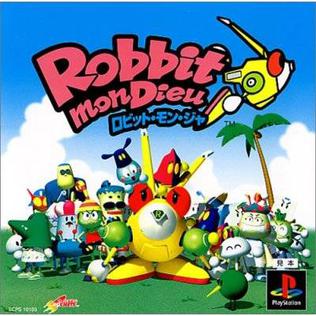
Robbit Mon Dieu (ロビット・モン・ジャ), sometimes referred to as Jumping Flash! 3, is a 3D platform game for the Sony PlayStation. It was developed by Sugar & Rockets and published by Sony Computer Entertainment for the PlayStation in Japan on October 14, 1999. It is the third and final game in the Jumping Flash! series. The game was later released on the Japanese PlayStation Network on July 26, 2007.
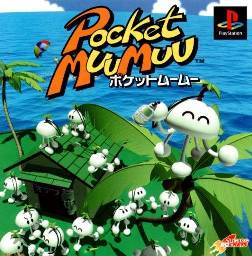
Pocket MuuMuu (ポケットムームー) is a 3D action game for the Sony PlayStation. It was developed by Sugar and Rockets and published by Sony Computer Entertainment and released exclusively in Japan in 1999. It is a spin-off game in the Jumping Flash! series. The game makes use of the Sony PocketStation peripheral. PocketStation is not required to play.

Ape Escape is a platform video game, developed by Japan Studio and published by Sony Computer Entertainment. It was released for the PlayStation in June 1999 in North America and Japan, and July 1999 in Europe. The first in the Ape Escape series, the game tells the story of an ape named Specter who gains enhanced intelligence and a malevolent streak through the use of an experimental helmet. Specter produces an army of apes, which he sends through time in an attempt to rewrite history. Spike, the player character, sets out to capture the apes with the aid of special gadgets.
God of War is an action-adventure video game series, the first era of which was loosely based on Greek mythology. Debuting in 2005, the series became a flagship title for the PlayStation brand and the character Kratos is one of its most popular characters. The series consists of nine games across multiple platforms; the first seven make up the Greek era of the series. Five of the Greek era games have been re-released through three separate compilations for the PlayStation 3 (PS3) platform: God of War Collection (2009), God of War: Origins Collection (2011), and God of War Saga (2012). With the exception of God of War III in the God of War Saga, each collection features remastered ports of the games that were not originally released on the PS3. God of War III was later remastered as God of War III Remastered and released on PlayStation 4 (PS4) in July 2015. God of War: Betrayal, God of War: Ascension, God of War (2018), and God of War Ragnarök are the only installments that have not been remastered for a newer platform or included in a collection.

Kileak: The DNA Imperative, known as Kileak: The Blood in Japan and Europe, is a first-person shooter video game developed by Genki for the PlayStation. It was published in Japan by Sony Music Entertainment in January 1995, followed by a North American and European release in September 1995 by Sony Computer Entertainment as a launch game for the console. Kimitaka Matsumae, former member of the S.S.T. Band, wrote the game's soundtrack.

Geograph Seal is a first-person mecha platform-shooter video game developed and published by Exact exclusively for the Sharp X68000 in Japan on March 12, 1994. The fourth and last title to be created and released by Exact for the X68000 platform late into its commercial life span, after being discontinued in 1993 by Sharp Corporation with the last model launched, it is widely considered a spiritual predecessor to the Jumping Flash! franchise by Sony Computer Entertainment.


















